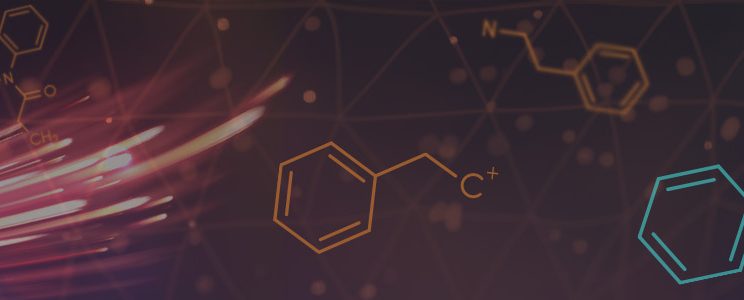This webinar originally occurred on June 13, 2024
Duration: 1 hour
Overview
Hemp compliance testing is used to quantify total Δ9-tetrahydrocannabinol (Δ9-THC), including both Δ9-THC and its precursor, i.e., Δ9-tetrahydrocannabinolic acid (Δ9-THCA), to determine whether a product is hemp or marijuana. The most effective liquid chromatography diode-array detector (LC-DAD) separation method published so far used two Raptor ARC-18 columns (150×2.1mm, 2.7µm), 0.5 mM ammonium formate plus 0.02% percent by volume formic acid at pH 3.0 as the A solvent, acetonitrile as the B solvent, and 75% B at 0.4 mL/min as the mobile phase. It was able to baseline separate 18 cannabinoids plus an internal standard (abnormal cannabidiol (CBD)) within 19 minutes. The use of an isocratic elution avoided baseline drifts which would cause high lower limit of quantification (LLOQ) and narrow linear calibration. The use of a low buffer concentration in the A solvent achieved a low LLOQ and a wide linear calibration. It was applied in potency testing of non-psychotropic cannabinoids and Δ8-THC-based products. It is applicable for compliance testing of psychotropic cannabinoids-based products.
A simple solvent extraction procedure, including homogenization, ultrasonication/pulverization, centrifugation, filtration, and dilution was proven exhaustive for recovery of cannabinoids prior to analysis. Methanol was shown to be the most effective extraction solvent. Extractions were based on the following principle: a sample should be completely and homogenously suspended into methanol. Brittle samples, such as plant materials and tablets, were ground, pulverized, then weighed and added into methanol under ultrasonication. Liquid samples, such as drinks, water-soluble oils and topical serum, were ultrasonicated, then weighed and added into methanol under ultrasonication. For cosmetics, lip balm was melted at 60°C and vortexed, while body lotion and face cream were stirred and pulverized, then they were weighed and added into methanol under ultrasonication. Solid samples that are sugar-rich, such as gummy candy, hard candy, and coffee, were first frozen and ground, then weighed and suspended into water under pulverization, and finally a portion was added into methanol under ultrasonication. Snacks and pet treats were first frozen and ground, then weighed and suspended into methanol under pulverization followed by ultrasonication.
Ultraviolet detection at multiple wavelengths, i.e., 230, 251, 261, 269 and 285nm, is recommended for optimal sensitivity and improved selectivity. External calibration is recommended, with 0.02 to 25 µg/mL linearity achievable for all cannabinoids, which is equivalent to 0.1-125% for 20 mg/mL hemp concentrates, 0.04-50% for 5 0 mg/mL plant materials, 0.0008-1% for 2.5 mg/mL drinks, and 0.008-10% for 250 mg/mL other hemp-derived products.
Accuracy and precision of quality control samples at low, medium and high concentrations in methanol could easily meet the ISO 17025 guidelines. While standard addition was the popular practice in the literature to assess extraction recovery, abnormal CBD, a cannabinoid not naturally present in Cannabis plants and commercially available with a reasonable price, was spiked into each sample to track extraction recovery in real time in our studies, obtaining 90-108% with 0.5-8.9% relative standard deviation in triplicate.
Optional electrospray ionization mass spectrometry (ESI/MS) can be used to verify selectivity. Our studies used electrospray ionization time-of-flight mass spectrometry (ESI/TOFMS), indicating overall good specificity with no interferences in quantification of Δ9-THC and Δ9-THCA. To use low-resolution mass spectrometers, multiple ion monitoring is recommended for better sensitivity.
Detailed Learning Objectives
- Attendees will learn about the most effective LC-DAD separation method published to date.
- Attendees will understand how to perform a simple methanol extraction procedure to recover cannabinoids from a wide range of samples.
- Attendees will understand how to utilize UV detection at multiple wavelengths for optimal sensitivity and improved selectivity.
Presenter
- Liguo Song, Ph.D. | Associate Professor, Department of Chemistry, Western Illinois University
Funding for this Forensic Technology Center of Excellence webinar has been provided by the National Institute of Justice, Office of Justice Programs, U.S. Department of Justice.
The opinions, findings, and conclusions or recommendations expressed in this webinar are those of the presenter(s) and do not necessarily reflect those of the U.S. Department of Justice.
Contact us at ForensicCOE@rti.org with any questions and subscribe to our newsletter for notifications.




